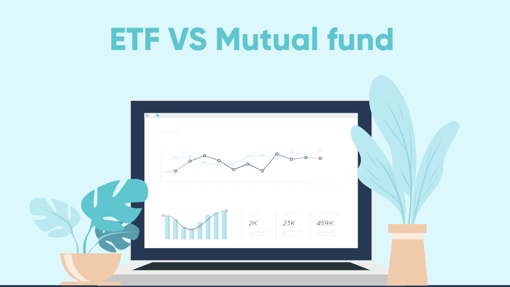Why is Portfolio Diversification Important?
4 minutes read

Diversification is an investment strategy that recommends owning several investments that tend to perform well at different times to reduce the effects of market fluctuations. In simple terms, don’t put all your eggs in one basket. But then how do you choose different baskets? Do you go with your gut and choose randomly? That is certainly not recommended. Fund managers use statistical techniques along with their knowledge and experience to select ‘uncorrelated assets.’ Uncorrelated assets help diversify your portfolio and thus reduce risk.
Correlation is a number ranging from -100% to 100%, derived using historical returns. Asset correlation is a measure of how investments perform with respect to each other and when such movements occur. When assets move in the same direction at the same time, they are ‘highly correlated.’ When one asset moves up while the other goes down, they are ‘negatively correlated.’ A correlation of zero means the assets are ‘uncorrelated’ or ‘non-correlated.’ If two assets are uncorrelated, the price movement of one asset will not have any effect on that of the other.
In general, investing in stocks, bonds, commodities, and alternative investments can help in dampening the overall volatility of an investment portfolio. Smart diversification absorbs losses of one asset class by balancing it with gains of the other. Investors should find a combination of investments that fits their risk tolerance and long-term investment objectives.
You can also use the SMART Investing technique as a guide to achieving long term wealth preservation and growth.
- S – Safe (Bonds, FDs, and Gold)
- M – Market Linked (Domestic and International Equity, Mutual Funds, ETFs)
- A – Alternative Investments (Real Estate, Private investments))
- R – Retirement Planning (Provident Fund, Pension Funds)
- T – Tax Saving (Tax Planning, Insurance)
With SMART Investing, you can hold a truly modern and diversified investment portfolio.
Let’s look at SMART Investing in detail:
S – Safety
Safety is the most important aspect of any investment. Traditionally, fixed deposits and gold are looked upon as safe investments. The objective here is to preserve capital. Typically, there are two categories of investors who prefer to invest in such safe instruments.
- First-time investors who are learning the basics
- Risk-averse investors looking for fixed and regular returns
Fixed deposits have been the preferred investment channel for preserving wealth for a broad set of investors. In fact, Indians hold almost 30% of their financial assets in savings accounts and fixed deposits. For slightly better yields, investors also tend to invest in investment-grade bonds & debentures.
Investments in bonds may also help investors with capital gains in case of an interest rate cut by the RBI.
Gold is also commonly viewed as a ‘safe investment’ option. It is a universally accepted medium of exchange with low volatility and high liquidity. A common suggestion by financial advisors is to have gold as a part of an investment portfolio for diversification and hedging. Gold acts as a hedge against inflation and is generally negatively correlated to equity markets during volatile periods.
In recent years, Gold ETFs have gained in popularity.Indian investors can now also invest in physically-backed gold ETFs listed in the US, where the bid/offers are extremely tight, and there is no GST
M – Market Linked
Market linked investment instruments are subject to short-term volatility. However, they also have a higher chance of generating greater returns in the long run. Direct equity and mutual funds are linked to the equity and debt markets. The objective of market-linked investments is capital appreciation and hedge against inflation.
When it comes to the investment universe, Indian investors can now easily include international stocks in the portfolio. Under the Liberalized Remittance Scheme (LRS), RBI allows Indian residents to remit and invest up to $250,000 in a financial year.
The US has over 3500 publicly traded companies, which adds to the 5000 India listed stocks, expanding the diversification options substantially. US markets have also significantly outperformed domestic markets in the last decade, proving their importance in any diversified portfolio. Investing in US stocks also protects your portfolio from INR depreciation and hedges your future liabilities. A long-term strategic allocation could thus provide an ideal diversification to your portfolio.
Mutual funds offer another easy way to participate in India’s growth story. FY19 saw a substantial rise in the number of new investors choosing mutual funds as their preferred market-linked options. 47% of these were in the age bracket of 20 to 35 years. Simplified norms and standardization & rationalization of schemes, coupled with greater transparency and educational campaigns, have helped in increasing the popularity of mutual funds in India.
A – Alternative Investments
In recent years, alternative investments have steadily crawled their way into investors’ portfolios to offer diversification. These instruments do not have a strong correlation with other asset classes, such as debt or equity. From conventional channels like real estate and commodities, investors have now moved on to more sophisticated asset classes such as high yield debt, structured products, private equity, and venture capital.
One of the biggest trends in the Indian real estate market is the rising investments by foreign investors. India’s growing credibility in the sector because of an improved regulatory framework has provided lucrative opportunities for investors.
In the past few years, there has been a considerable growth in the OTC market for trading in unlisted shares. These are the shares that are not listed on a stock exchange, but are privately traded in the OTC market.
Many of these alternative investments are also not to domestic selection. With Winvesta’s multi-currency account, you can now invest and maintain alternative assets in many geographies.
R – Retirement Planning
Indian investors generally do not have enough social security benefits on retirement, especially in the private sector. This has shaped the thought process of Indian investors to save up for retirement.
Pension schemes and provident fund are two popular modes of retirement planning. The objective here is to generate enough capital to utilize in later stages of life.
With reducing interest rates in the country, provident funds (PF) are gaining importance among investors. They offer tax-exempt returns in the debt category and also help in retirement planning. Both the Employee Provident Fund (EPF) and Public Provident Fund (PPF) are likely to remain popular as they offer higher returns with tax benefits.
T – Tax Planning
Tax saving helps in increasing the surplus income in one’s hand and thus improves the ability to invest. Insurance, provident funds, and equity-linked saving schemes are some of the common and popular investment channels for tax saving. In addition to these, investors may look at tax-efficient instruments in order to reduce their tax outflow. The objective is to develop a diversified portfolio while being tax-efficient.
Conclusion
With the help of SMART investing, you can develop an optimally diverse investment portfolio that will help you generate good returns and preserve wealth. It is important to have strong diversification while investing as it absorbs the market volatility. Although it is hard to find completely uncorrelated assets, by efficient diversification across asset classes and geographies, it is possible to build a portfolio with a lower risk for any given expected return.

Contributed by Prateek Jain
He is the Co-founder & President of Winvesta. Before Winvesta, Prateek worked at Deutsche Bank for 11 years


